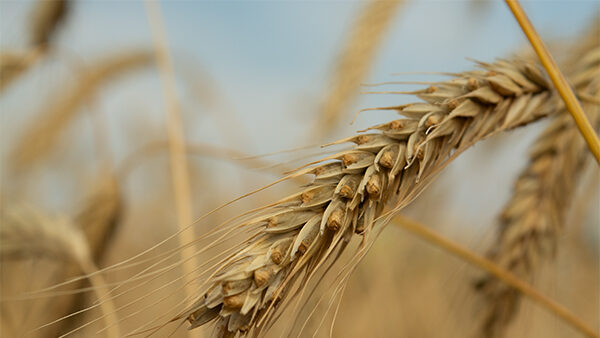Shivendra Bajaj is the Executive Director of Federation of Seed Industry of India. During the COVID-19 crisis, the Indian government created a stimulus program that will invest millions of dollars into a new infrastructure and logistics projects. Bajaj expects that this stimulus will have major implications for the India’s agriculture and seed markets.
Seed World PRO (SWP): What does India’s new infrastructure and logistics stimulus mean for agriculture?
Shivendra Bajaj (SB): Infrastructure and logistics are the two important challenges that has been plaguing the Indian agrarian sector. During the pandemic, these challenges were further highlighted with many reported incidents across India where farmers had to throw away high-valued crops. With the government’s intervention of setting up an agri-infra fund with a corpus of Rs 1 lakh crore [an investment fund] for providing financial support to agri-entrepreneurs, start-ups, agri-tech players and farmer groups, I believe it will largely help in streamlining the sector and help the farmers get the right value for their produce with consumers enjoying quality food.
SWP: How has COVID and COVID lockdowns impacted agricultural labor?
SB: Our agricultural sector depends on migrant laborers for various operations and it is estimated that 50 million migrant laborers (of India’s 140 million) are expected to have returned to their native places from cities due to the lockdown. In areas where commercial crops are cultivated, the daily wages have reportedly increased due to shortage of labor. Many crops have been destroyed because it could not be taken to the market due to lack of transportation and laborers. Further, unavailability of labor may force farmers to adopt mechanization given they have the credit flow.
Further, unavailability of labor may force farmers to adopt mechanization given they have the credit flow.
SWP: Do you have a feel for how much labor-intensive vs mechanized agriculture is found in India?
SB: According to a report by the Indian Council of Food and Agriculture, only 40% to 45% of Indian agriculture has been mechanized. To make it conducive, farm mechanization in India needs to look at specific regional conditions, requirements, must be connected to agricultural policies and various social and cultural framework of the Indian farming community. Unlike the extensive farmlands in the U.S., Canada, Russia, and the European Union, the average land sizes of Indian farms are only around two acres. It makes the use of large farm machinery not possible. Majority of these small farmers are from economically impoverished backgrounds and cannot afford the very high purchase and maintenance prices of the farm machinery.
Punjab, Haryana and Uttar Pradesh have high level of mechanization due to the highly productive land in the region as well as a declining labor force. But in these states too, mechanization is used more in pre-planting and harvesting only. While the Indian government is providing subsidies to buying machinery, many of the marginal farmers still need to take loans for the purchase, and many are found ineligible to take out loans since they cannot furnish the documents required to undertake the loan risk. The situation can be made favorable by introducing smaller and less expensive farm machinery. Farmers can form groups/co-operatives to hire or buy the machinery and can share them for pre and post-harvest operations. R&D and several schemes are encouraged by government to help entrepreneurs and custom hiring centers to come up with innovative farm technologies to suit Indian conditions and help farmers adopt them.
SWP: Will a shift to mechanization require new seed varieties?
SB: Right from planting to harvesting, the crops that are grown in India are mostly labor intensive. Currently, it is difficult to find which have been bred to be conducive for mechanization. Although, significant research is being carried on to developing these varieties. For example, right now in India, farmers do two or even three pickings of cotton by hand. To make cotton more suitable for mechanization, it needs to be such that most of the boll opening happens at once. With more awareness on the advantages of mechanization and credit flow for farmers to afford the machinery, new seed varieties can be introduced in the system in future.
For example, right now in India, farmers do two or even three pickings of cotton by hand. To make cotton more suitable for mechanization, it needs to be such that most of the boll opening happens at once.
SWP: Will seed companies directly benefit from the infrastructure and logistics funds available?
SB: This fund will largely help the start-ups, agri-tech companies and agri-entrepreneurs. However, it will create an ecosystem which will streamline the sector. So, while the seed companies are not the immediate beneficiaries, it will definitely help the companies in the long run where quality seeds can be delivered to the farmers and technologies like traceability will build the trustworthiness of a brand.
SWP: Do you think India will experience a shift in production? If machinery is more accessible will farmers choose to grow crops that require more equipment and fewer people?
As mentioned above, the use of mechanization in fields in India is dependent on the crops that is grown. Majority of farmers being small and marginal farm holders, it is difficult for them to bear the cost of the machines. The penetration and adoption of mechanization may push farmers to adopt varieties that are conducive to mechanization and hence also use it for other labor intensive processes. Due to less adoption, there are no customized machines available and currently, the labor cost is feasible in comparison to mechanization. Having said that, significant mechanization is happening with farmers renting the machines and pooling their work.
SWP: Have export bans changed 2020 plantings? The United States imports a lot of organic soybeans, but the flow stopped during COVID. Has it impacted the local industry?
SB: As per the Economic Survey 2018-19, India has been a consistent net exporter of agri-products, touching Rs 2.7 lakh crore exports. India’s total agricultural export basket accounts for a little over 2.15% of the world agricultural trade. The major export destinations are U.S., Saudi Arabia, Iran, Nepal and Bangladesh. Recently, the government has initiated a comprehensive “Agriculture Export Policy” aimed at doubling the agricultural exports and integrating Indian farmers and agricultural products with the global value chains. It has created agri cells in many Indian embassies abroad to take care of agricultural trade related issues. Some of these initiatives will help India become a reliable exporter while assuring food security domestically. Commercial floriculture is being viewed as a high growth industry. In the international market, the important floricultural crops are rose, gypsophila, liastris, nerine, orchids, carnation, chrysanthemum, gerbera and gladiolus. Fruits and vegetable seed in India are also viewed as a high growth Industry.
Fruits and vegetable seed in India are also viewed as a high growth Industry.
SWP: Looking forward how do you expect planted hectares to change in 2020?
SB: As per the current Kharif season, 88% of sowing has been done. Despite Covid-19, the area for rice, pulses and other crops has grown in comparison to 2019. Below table showcases the comparison:













